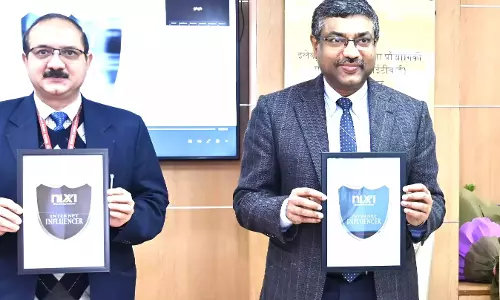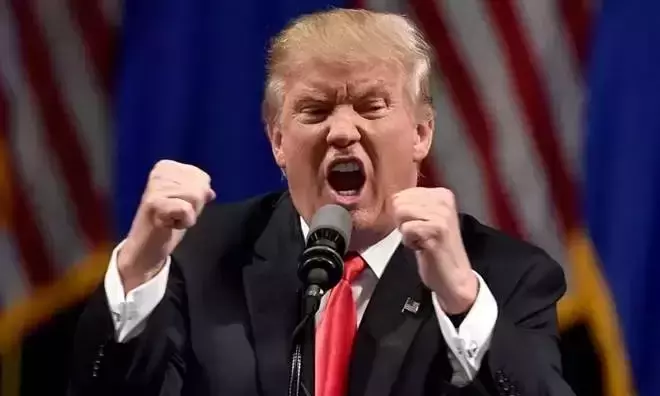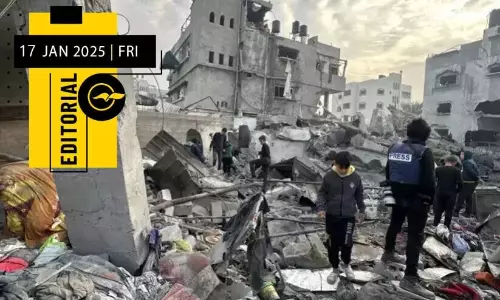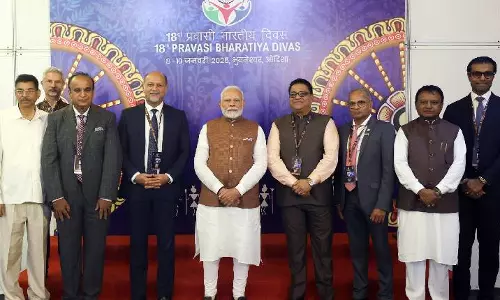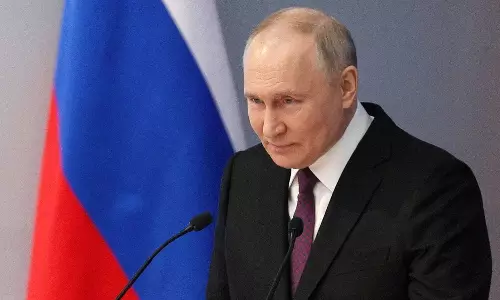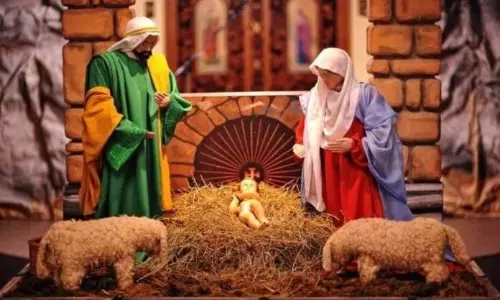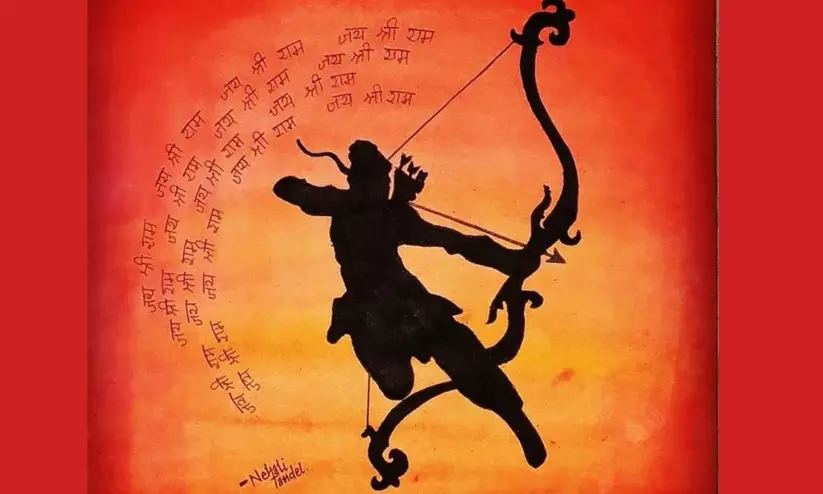
When ‘Jai Sree Ram’ becomes a death call
text_fieldsDuring the first campaign for the Hindutva movement's claim for the Babri Masjid, the country first heard the slogan 'Jai Shri Ram' when a group of enraged people aligned with ultra-right-wing groups replicated the slogan raised by their leaders. Since then, wherever violence is invoked by people, often from poor backgrounds and influenced by their right-wing leaders to spread hate against Muslims and other minority communities in the country, they chant 'Jai Shri Ram' as though Ram were the god of destruction.
Innumerable incidents of violence, attacks, assaults, lootings, and rapes have been reported in recent years and few if not none were without the chanting of 'Jai Shri Ram.' When the identity of Ram becomes associated with violence and destruction, as reflected in the communal violence triggered by the right wing, it is imperative to revisit history to understand how Ram became an emblem of threat and death. Furthermore, it is essential to examine how the right-wing tactfully uses this name to legitimize their crimes and atrocities.
Saffronization and its impact on India's political landscape
In India's recent past, more specifically after Narendra Modi's saffron party came to power in 2014, the incidents where the slogan 'Jai Shri Ram' begins to reverberate in the vicious atmosphere have increased. The country heard it when veteran BJP leader LK Advani began the Rath Yatra during the 1980s, during which countless incidents of reported killings of Muslims, looting, pillaging, and violence occurred wherever the Yatra went. We heard it when the Babri Masjid was demolished by the hands of kar sevaks in the presence of Advani and other leaders. We heard it being raised when communal violence gripped the country after the Babri Masjid demolition. We heard it being chanted when, in January 1999, Graham Staines, a 58-year-old Australian Christian missionary, and his two sons, one 10-year-old and the other six-year-old, were burnt alive by a Hindu mob in a remote Indian village. We heard it again in Gujarat in 2002 when a Hindu mob went on a rampage, resulting in killings, rapes, and looting, in which over 2000 Muslims lost their lives in the massacre.
Even after a Ram Temple was built and consecrated by the hands of PM Narendra Modi, the name of Ram continued to be used to intimidate and assault people belonging to other faiths. Carrying the idea of a Hindu Rashtra, the RSS, the ideological mother organization of all Hindutva groups, and people and organizations aligning with the RSS are in the process of denigrating minority communities in India to second-class citizens entitled to enjoy limited rights. Other incidents of mob lynching and killing people in the name of cows were also reported, with the attackers raising 'Jai Shri Ram'.
The unfolding political scenario in India now is such that the right-wing wants the country to be called Bharat. Once hailed as the largest democratic country in the world, India had the concept of secularism at its core, but today when people hear the word 'secularism’, they often frown at it, remarking that it was a ploy evolved by the Congress party to fool the majority Hindus. A majority of people in north India are known to be swayed by the slogans raised against the minority communities by the right-wing parties. However, there is still hope for South India, even in places where most people have a political view and leniency towards the BJP. Still, they are not jaundiced by any vicious agenda against minorities, especially Muslims. It is because of this trend that the BJP fails to find a place of power in any of the southern states.
Historical roots: India's transformation and Hindutva experiment
The transformation of India represented by the switch to the saffron mode was not an overnight occurrence but rather the result of years of experimentation by right-wing groups who attempted various tactics to spread hate in Indian society. These tactics included creating communal violence, instigating violence in the name of temples, attacking people in the name of cow slaughtering, invoking their own creation of Love Jihad, and tampering with and manipulating history, particularly regarding the Mughal dynasty.
Historically, during the 1000 years of Muslim rule in the country, which encompasses almost half of the modern era, including the 800 years of the Mughal era, none of the predecessors of the right-wing groups in their faith fought them in the name of religion, as most of them were aligned with these Muslim leaders. If the rulers had been persecutors of the majority of Hindus, their regime would not have survived a century in the country; on the contrary, Hindus would have united to fight against these 'religious oppressors', which would have forced them to leave the country. However, the reality is different; they ruled almost the entire span covering the latter half of the modern era until the British invaded the country.
Navigating through terrorism: political manoeuvring
The country also witnessed innumerable terror attacks, including ones with bombs exploding in crowded places, attacks on the Parliament, and terror attacks in Mumbai. Culprits who were identified as Muslims were arrested and executed before the general elections, ultimately leading to Narendra Modi becoming uncontested within the BJP, and to be prime minister in 2014. And then we were hearing steadily about terror outfits like Indian Mujahidin, Lashkar-e-Taiba, Hizbul Mujahideen, and other groups, the list of which will be endless.
Today, none of the terror outfits attempt to attack India because the country has a strong, 56-inch chest and a visionary leader as the Prime Minister. That is the answer one would get if questioned about it. No one would dare to attack India while Narendra Modi adorns the Prime Ministerial chair; that is the narrative. Let us forget about the Chinese aggression in the northeastern region of the country. Since China is not a Muslim country, confronting them will lead to hardly any political mileage.
How did Ram come to have his name chanted irrespective of the occasion, especially when there are many other prominent gods in Hinduism? Firstly, it's important to note that Hinduism is not a monolithic religion, nor does it have one single god to be projected as the god of all Hindus, as is the case with Semitic religions. Instead, there is a cultural tradition known as Sanatana Dharma, believed to have evolved during the Aryan era in India. Followers of this cultural tradition come from various tribes, castes, and creeds, each worshipping their own gods or willing to accommodate other gods within their cultural framework.
'Vasudhaiva Kutumbakam' is a concept that embodies Sanatana Dharma, meaning 'the whole world is one family'' In this cultural tradition, every religion, caste, faith, and god has its place, which is unlike Semitic religions, which are based on a single god, book, and law.
The challenge of unifying Hindus: Sanatana Dharma's diverse landscape
Since Sanatana Dharma does not prescribe belief in a single god and a unified code like Semitic religions, which have Canon Laws for Christians, the Ten Commandments for Jews, and Sharia for Muslims, it has been challenging to unite all Hindus under one umbrella. It is for this reason that the Sangh invested in Ram as a common divine identity revered by all Hindu groups and castes, serving as a single connecting point. The Sangh aims for Lord Ram to be recognized as the sole deity and a rallying point for all Hindus and for the Manusmriti to serve as the law of Hindus to be implemented in the envisioned Rama Rajya.
Divergence from the true Ramayana: A right-wing narrative
However, the Lord Ram described in the scriptures differs from the Ram that the Sangh is projecting. In the Ramayana, Ram is described as a Maryadha Purushottam, meaning a man of virtues who stood for justice and upheld the welfare of all people. Critics are in plenty who point out that when the Ram is invoked by the right-wing, who employ all forms of nefarious and deceitful tactics to retain power, they are defaming the divinity of Ram, betraying his values, and projecting him as a warmonger.
We should remember the words of Mahatma Gandhi, who wished for a Ram Rajya in India and wrote in Young India, "Whether Rama of my imagination ever lived or not on this earth, the ancient ideal of Ramarajya is undoubtedly one of true democracy in which the meanest citizen could be sure of swift justice without an elaborate and costly procedure".






